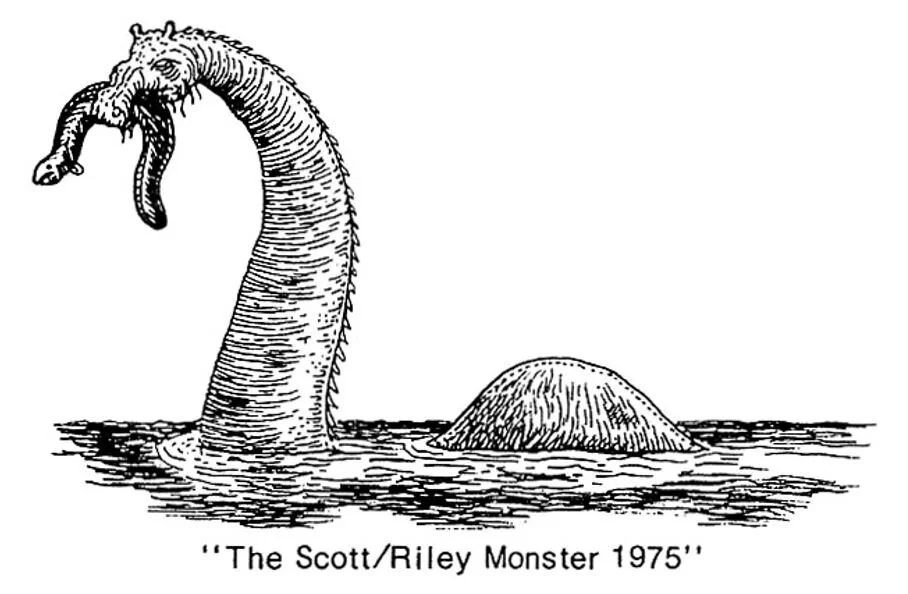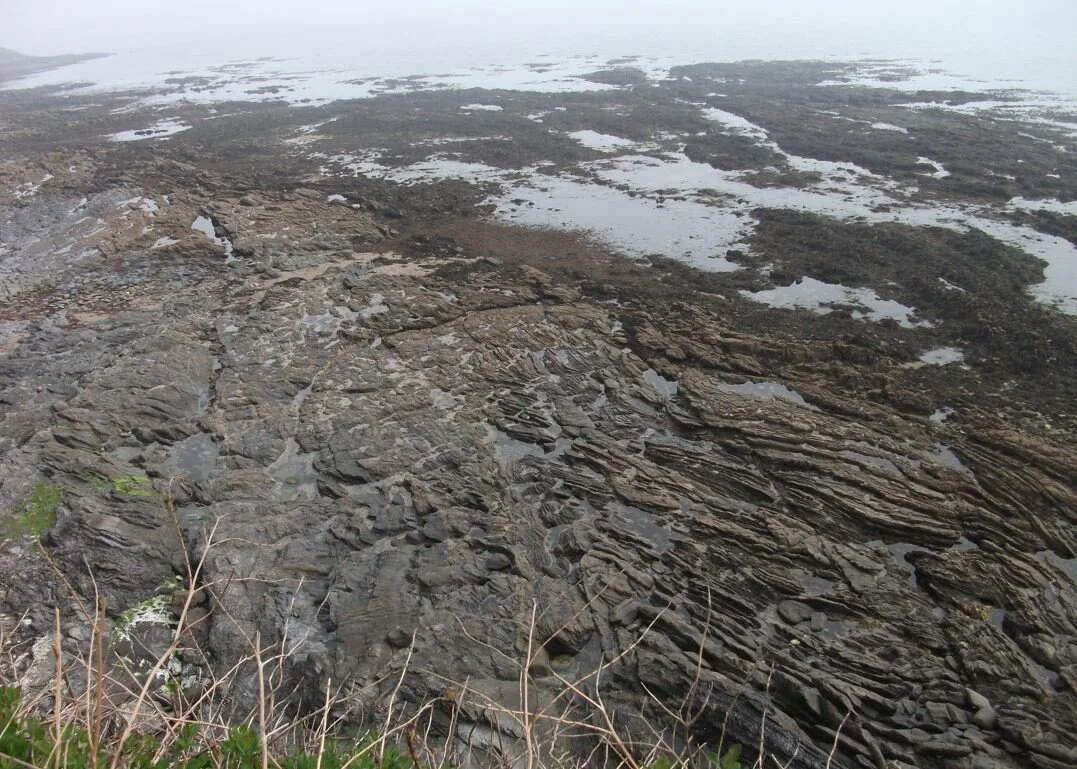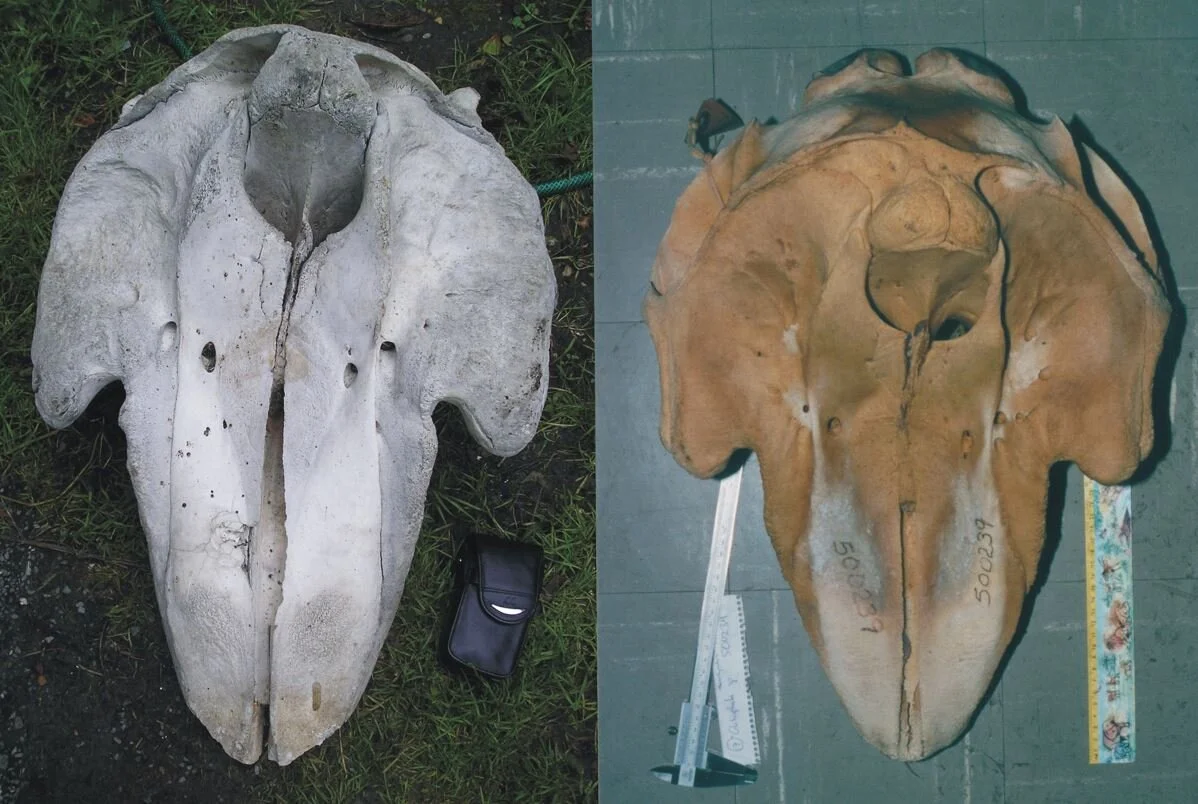On a terrifying ‘sea giant’ of the Cornish coast…
Caption: a view from the South-West Coast Path, taken from close to Rosemullion Head, Cornwall, during September 2020. These waters are the haunt of the Morgawr, oh yes. Image: Darren Naish.
Sea monsters have been covered here, on and off, over the years. And as you’ll know if you’re a regular reader, they’ve been discussed at reasonable length during recent months due to my Monsters of the Deep exhibition at the National Maritime Museum in Falmouth, Cornwall. Today we take a brief look at a famous Cornish sea monster, in part because I have a spare, unused (and very brief) piece of text pertaining to it.
Specific sea monsters are associated with many places around the coasts of the UK, and among the most famous is the Cornish monster known as Morgawr, supposedly seen in Falmouth Bay from 1975 onwards.
Caption: a rendition of the creature supposedly seen from Pendennis Point by a Mrs Scott and Mr Riley during September 1975. It had stumpy horns, bristles down its back, and was seen to dive and emerge at the surface with a conger eel in its mouth.
A few writers – inspired by Bernard Heuvelmans and the other cryptozoologists – seemingly took the idea of Morgawr seriously, and implied or stated that it might be a real creature awaiting zoological discovery. Supposedly, Morgawr was a giant, long-necked monster with humps on its back. Eyewitness accounts described it hunting and eating conger eels and lounging at the sea surface with its neck erect (Mawnan-Peller 1976, Bord & Bord 1981, Moiser 2004). In 1976, two blurry black and white photos depicting Morgawr – signed only ‘Mary F’ – were sent, anonymously, to local newspaper The Falmouth Packet.
Caption: the famous/infamous ‘Mary F’ photos of Morgawr, taken from Rosemullion Head near Falmouth in the February of 1976. An accompanying letter, written to the Falmouth Packet newspaper, described how the creature was visible for just a few seconds and that its visible part was 15-18 ft long. It was said to “move in a funny way” and to be frightening to the observer. The idea that sea and lake monsters strike an unusual level of fear in their witnesses became a staple bit of monster lore from the 1970s onward…
However, virtually everything about Morgawr is linked in some way with the same one person: Irish artist and stage magician Tony ‘Doc’ Shiels. Shiels is known to have spent considerable time in Cornwall during the 1970s. Indeed, Shiels even seems to have invented the name Morgawr itself. It is thought that he was also the origin of the ‘Mary F’ photos. They are not genuine pictures of an animal but instead seem to show a plasticine model (Chorvinsky 1991, Downes 2002).
Caption: part of the rocky foreshore of Durgan Beach, photographed on a misty morning in April 2010. Image: Darren Naish.
A skull purported to be that of Morgawr was discovered on Durgan Beach in Cornwall in 1975 and is today owned by the Centre for Fortean Zoology in Devon. It was supposedly retrieved from a rotting carcass, said to be that of the monster. Numerous anatomical details show that it is actually the skull of a pilot whale. The decomposing remains of sea creatures are identified even today as those of weird, mystery monsters, perhaps showing that belief in such creatures persists among the public at large.
Caption: at left, the Durgan Beach ‘Morgawr’ skull of 1975. At right, a definite pilot whale skull. The two might not represent the same species (there are two pilot whale species), but I think this proves the true identity of the Durgan Beach skull. Images: Darren Naish, Colin McHenry.
Here’s your reminder that the Monsters of the Deep exhibition is open until early 2022, and I hope that those of you who are interested get to see it. For previous TetZoo articles on sea monsters, see…
Book Review: Sea Monsters on Medieval and Renaissance Maps, November 2014
My New Book Hunting Monsters: Cryptozoology and the Reality Behind the Myths, February 2016
Usborne’s All About Monsters, April 2019
Sea Monster Sightings and the ‘Plesiosaur Effect’, April 2019
A Review of Robert L. France’s Disentangled: Ethnozoology and Environmental Explanation of the Gloucester Sea Serpent, November 2019
Monsters of the Deep, a Ground-Breaking Exhibition at the National Maritime Museum, Cornwall, October 2020
Support my writing, research, and the persistence of this blog here at patreon. Thanks!
Refs - -
Bord, J. & Bord, C. 1981. Alien Animals. Book Club Associates, London.
Chorvinsky, Mark. 1991. The Mary F. Morgawr photographs investigation. Strange Magazine 8, 8-9, 11, 46-48.
Downes, J. 2002. Morgawr the sea dragon. In Downes, J. & Freeman, R. (eds) CFZ Yearbook 2002. CFZ (Exeter), pp. 27-51.
Mawnan-Peller, A. 1976. Morgawr: the Monster of Falmouth Bay. Privately published.
Moiser, C. 2004. Mystery Sea Serpents of the South-West. Bossiney Books, Launceston.









